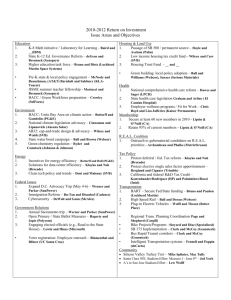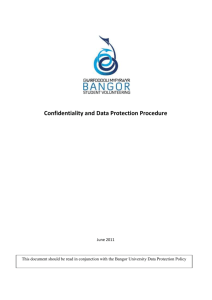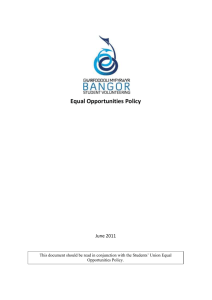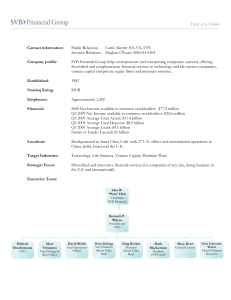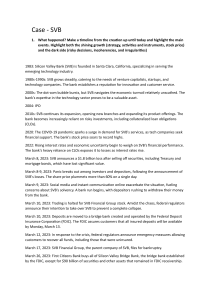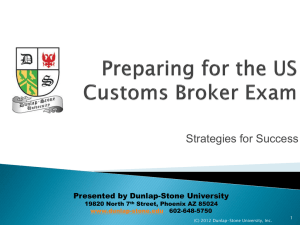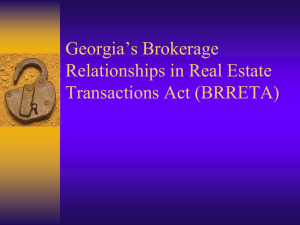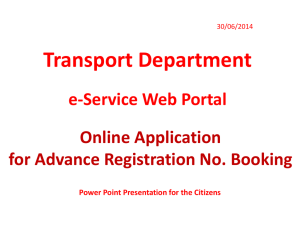SVB - ChennaiSunday
advertisement
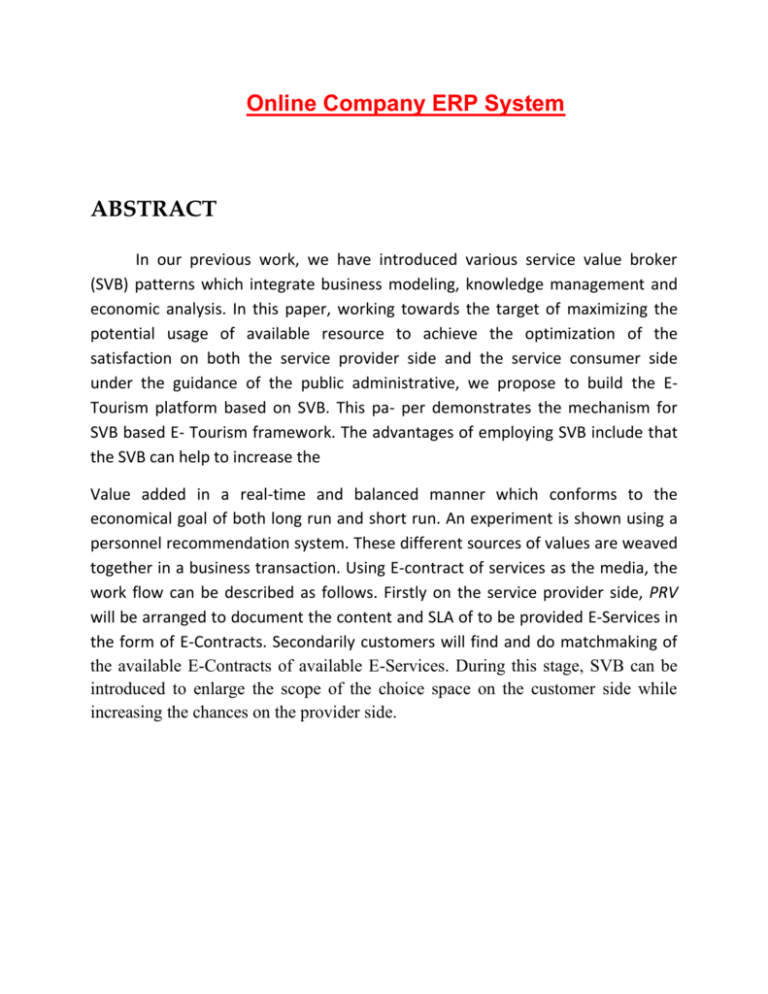
Online Company ERP System ABSTRACT In our previous work, we have introduced various service value broker (SVB) patterns which integrate business modeling, knowledge management and economic analysis. In this paper, working towards the target of maximizing the potential usage of available resource to achieve the optimization of the satisfaction on both the service provider side and the service consumer side under the guidance of the public administrative, we propose to build the ETourism platform based on SVB. This pa- per demonstrates the mechanism for SVB based E- Tourism framework. The advantages of employing SVB include that the SVB can help to increase the Value added in a real-time and balanced manner which conforms to the economical goal of both long run and short run. An experiment is shown using a personnel recommendation system. These different sources of values are weaved together in a business transaction. Using E-contract of services as the media, the work flow can be described as follows. Firstly on the service provider side, PRV will be arranged to document the content and SLA of to be provided E-Services in the form of E-Contracts. Secondarily customers will find and do matchmaking of the available E-Contracts of available E-Services. During this stage, SVB can be introduced to enlarge the scope of the choice space on the customer side while increasing the chances on the provider side. The Architecture Software design patterns [15] have been proved proposed and verified successfully in the modeling processes of multiple technical domains. However for modeling for modeling service oriented computing (SOC) applications, design patterns have to be adapted according to value of Quality of Service (QoS) or business contractual aspects. We refer to this as the Service Value Broker (SVB) pattern [9]. SVB has already been proposed for cloud service brokerage [22] which we foresee as an important characteristics of the optimization of the Eservice composition of [16] E-Service Economics. The related definitions are as follows [9]: • Service Value Broker (SVB): driven by a value based goal, when a direct service composition cannot meet some required constraints from the service contract [7] or service level agreement(SLA) such as response time, location, license area, available period, currency format. If the introduction of a intermediate service can help to solve these problems and enable a service composition to be qualified, the introduced intermediate service is a SVB. • Direct Service Value Broker (DSVB): direct SVB is a special type of SVB resulting from a composition of services. This composition must bring more value to the stakeholder who introduces the DSVB. By value we mean not only monetary value but also non-monetary such as reputation and brand value, etc. From the perspective of value analysis, a simplified formulation of the difference between constructing a traditional broker and a SVB is as follows: 1) Quality driven - For constructing a traditional broker, a composing service is chosen based on the order of the quality of its functionality. And for a set of composing services, the priority is in ratio to: Σ integration (quality)i:::n . 2) Price/quality driven - For constructing a SVB, a composing service is chosen based on the order of the price/quality of its functionality. And for a set oΣf composing services, the priority is in ratio to: integration (price=quality)i:::n +△ value-added. To cope with the challenges of E-Tourism systems such as multiple sources of data processing, high dimension of database, large linked data, huge amount of sensor data collection, and real-time response, etc, we propose to alleviate the problem solving from a knowledge management perspective in combination with a SVB based framework. SVB directly centers service value implementation and service value optimization.We have collected demonstrative SVB in [11]. In this paper, we propose to use SVB as the base to integrate three important sides of a service ecosystem: service provider, service customer and public administration [6]. Each of these three sides maintains an independent interest or value system and at the same time relates to others as an element of an global value calculation system. SVB is expected to function as an important source of value added for optimizing the whole system under the comprehensive evaluation/measure in terms of value The expected contributions of this architecture include the follows: • Enhanced knowledge management granularity - From knowledge management perspective, SVB based architecture will leverage the abstraction level of the knowledge decomposition since problem description can be decomposed or mapped to knowledge pieces represented by various SVB elements above the data map stage in a MapReduce framework [29], and the result can be integrated as a general solution through the SVB based knowledge pieces above the level of data level of the reducing stage of a MapReduce implementation as well. • Value added focused - SVB is designed to bridge the barrel of both functional and QoS sides in both individual service select and service composition to reach a measurable value increase. Under a well managed knowledge management implementation, a balanced result in terms of the comprehensive value can be fairly expected. The rest of the paper is organized as follows: SectionII presents background knowledge and the general scenario. Section III presents the analysis of the sources of value added brought by introducing SVB and the comprehensive analysis. Section IV presents an experiment on a personnel recommendation system. This is followed by related work in Section V and conclusions with future directions in Section VI. EXISTING SYSTEM: The Existing System is not able to update the details and provide it online immediately. The online services are not in use so there is no remote access. The mismanagement of the confidential data like addresses and other is high leads to threat. The user has to search for the details manually asking to the provider. It is fewer users oriented. The system consumes more manpower. The owner of the tourism provider is not able to directly contact with the customer and their interests. Only single system which is only to enter the details in computer for future use. The reports cannot be generated automatically. Recoding is difficult as it need more paper work. The services are not reliable on phone. The other booking is not possible. Disadvantage: 1. There is no Booking System. 2. No Videos and Maps for Visiting Places. PROPOSED SYSTEM: The Proposed System automates the whole process by the help of Database Integration Approach. The features are 1. 2. 3. 4. 5. The system is user friendly and control over various applications. The project management is easy, simple and retrievable. No mismanagement of data during the project development. The system is highly secured and authenticated. The user can themselves check and book the reservations. Advantage: 1. Here Booking System is available. 2. Here videos and maps available about visiting places. Hardware Requirements: • System : Pentium IV 2.4 GHz. • Hard Disk : 40 GB. • Floppy Drive : 1.44 Mb. • Monitor : 14’ Colour Monitor. • Mouse : Optical Mouse. • Ram : 512 Mb. • Keyboard : 101 Keyboards. Software Requirements: • Operating system : Windows XP. • Coding Language : ASP.Net with C# • Data Base : SQL Server 2005.

